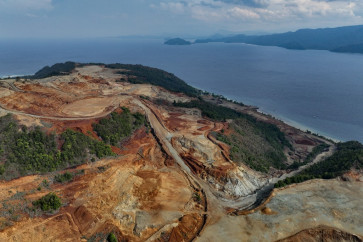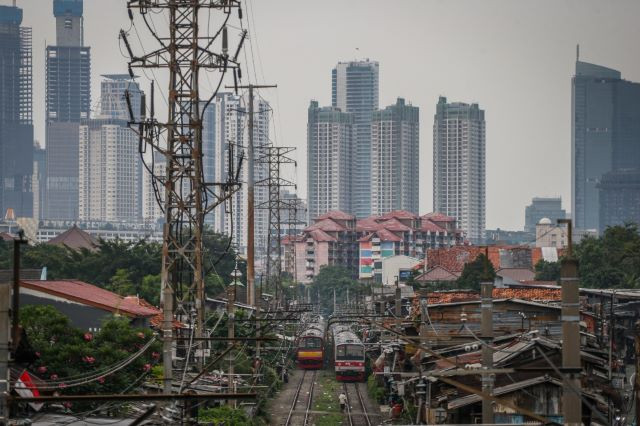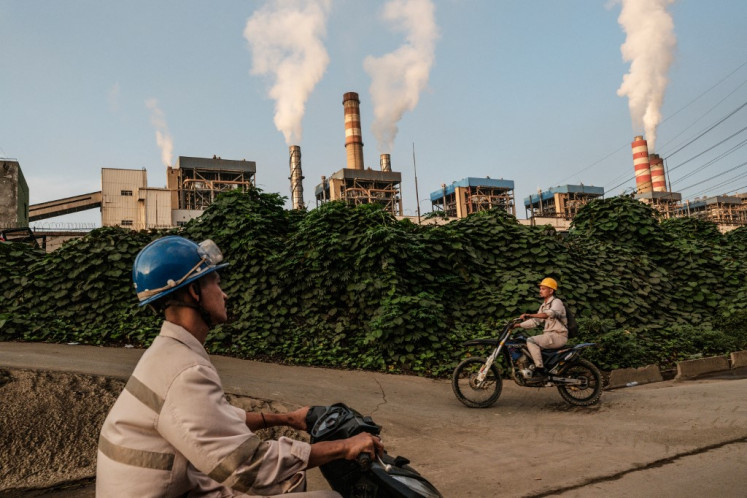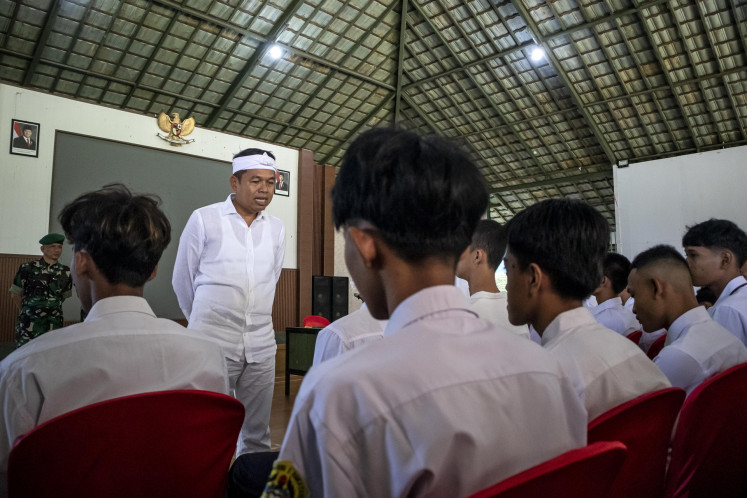Seizing the opportunity for solar panel manufacturing
With an estimated requirement of 10-15 tonnes of silica sand per megawatt, Indonesia has the potential to produce a staggering 30 terawatts of solar panels.
Change text size
Gift Premium Articles
to Anyone
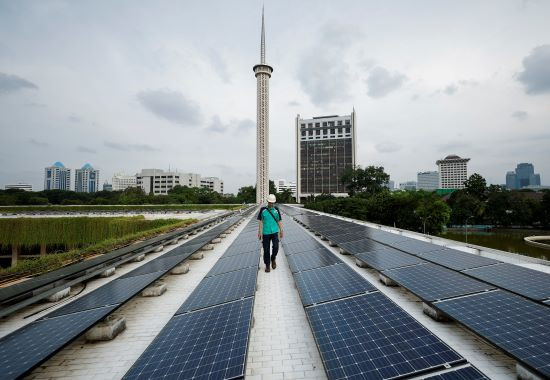 Faith in green energy: A technician walks on March 26, 2024, between solar panels that partially provide electrical power to Istiqlal Mosque in Jakarta. (Reuters/Willy Kurniawan)
Faith in green energy: A technician walks on March 26, 2024, between solar panels that partially provide electrical power to Istiqlal Mosque in Jakarta. (Reuters/Willy Kurniawan)
I
To facilitate this energy transition, Indonesia can harness sunlight, an abundant and infinite energy source. Indonesia will require billions of solar panels to meet its future clean energy needs to catalyze its economic growth. Furthermore, it is estimated that Indonesia would need 3,700 gigawatts (GW) of solar energy to achieve net-zero emissions — such a big domestic market potential.
The pressing question remains: how will Indonesia procure these vast quantities of panels?
Indonesia cannot afford to merely rely on imported solar panels and must aim to establish a robust domestic market. The government must prioritize the development of local manufacturing capabilities to produce billions of solar panels at the earliest opportunity.
Moreover, as Indonesia gears up to export solar electricity to neighboring countries like Singapore, the demand for solar panels within the nation is expected to surge significantly.
According to the Industry Ministry, the current annual production capacity for solar panels stands at only 1,600 megawatts-peak (MWp). This capacity falls significantly short, especially when considering the government’s modest target of expanding solar power generation by 300-400 GW until 2060. This indicates that the current production capacity for solar panels remains inadequate.
The primary raw material for solar panels is silicon, which is naturally found in silicate compounds and quartz sand. Indonesia, as per the Energy and Mineral Resources Ministry, has vast potential silica sand resources, totaling up to 25 billion tonnes, with reserves amounting to 330 million tonnes. With an estimated requirement of 10-15 tonnes of silica sand per MW, Indonesia has the potential to produce a staggering 30 terawatts (TW) of solar panels.
Indonesia's silica sand resources and reserves are distributed across 23 provinces, spanning from Aceh to West Papua. The quality of silica sand in several regions, such as Kalimantan, Lampung, Bangka Belitung, West Sumatra, and the Riau Islands, meets solar panel industry specifications and is considered competitive on the global stage.
However, the downstream processing of silica sand into solar panels in Indonesia represents a missed opportunity.
Currently, Indonesia houses only one solar panel factory, PT Ali Solar Cell (ASC) in Batam, Riau Islands province. ASC has been operational since 2019, encompassing the entire production process from wafer manufacturing to solar cell assembly, albeit with a focus on export to the United States.
Additionally, there is PT Trina Mas Agra Indonesia (TMAI) in Kendal, Central Java, planned to commence operations in the third quarter of 2024, with a production capacity of 1 GWp per year.
Despite these commendable efforts, the establishment of this solar cell factory falls short of meeting Indonesia’s burgeoning need for the expansion of solar power plants.
With a vast market potential, Indonesia must downstream its abundant silica sand resources to final solar panel products. To position Indonesia as a leading producer of solar panels globally, Indonesia needs to take strategic actions.
Indonesia must formulate a comprehensive road map for the development of the solar panel industry, spanning from extraction to production, and from sand to solar modules. Such a road map will entice investors to view Indonesia as an attractive investment destination.
This initiative aligns with the government’s regulation to halt silica sand or quartz sand exports, a crucial step in securing long-term raw material supplies. Furthermore, the recent decision to increase the minimum local content requirement to 60 percent for solar panel projects, starting January 2025, signifies a significant step toward promoting domestic manufacturing.
While this policy reduces the reliance on imports and fosters the growth of local manufacturing, it also presents a challenge due to the current inability of domestic producers to operate at low costs, potentially leading to higher solar panel prices.
To mitigate this, Indonesia could adopt a collaborative approach with global leaders like China, the world’s foremost solar panel manufacturer. By inviting technology transfer and establishing joint ventures, such as partnerships with Trina Solar Co. Ltd., PT Dian Swastika Sentosa and PT Agra Surya Energy, Indonesia can leverage international expertise to enhance its competitive edge.
These synergistic collaborations not only expedite the development of Indonesia’s solar panel sector but also facilitate the transfer of cutting-edge technology to the local workforce, fostering a knowledge-rich environment for innovation and growth.
Developing skilled local labor is essential to propel the solar panel industry forward. While foreign expertise can complement technological advancements, it is time for Indonesians to take the lead. With a potential market, abundant raw material resources and skilled labor, Indonesia can competitively produce solar panels.
To enhance the market value of solar panel products and align with the energy transition in the manufacturing sector, Indonesia must ensure that solar panel factories use clean energy sources. Currently, solar panel production predominantly relies on fossil fuels to power the processes.
Nonetheless, according to the International Energy Agency (IEA), solar panels only require four to eight months of operation to offset carbon footprints during the production process. Subsequently, the electricity generated from solar panels – with an average lifespan of 25 years – is clean, emission-free electricity. This clean electricity from solar panels can then be utilized as the energy source for manufacturing solar panels, resulting in low-carbon products.
The government ought to emulate the examples set by India and the US, which offer incentives and subsidies generously to the solar panel industry, facilitating the production of solar panels that can compete globally. For instance, the government can grant a 30-year tax holiday to solar panel producers, akin to the investment in the new capital city project.
***
Denny Gunawan is postdoctoral research associate, ARC Training Centre for the Global Hydrogen Economy at UNSW, Sydney; Anastasia H. Soeriyadi is postdoctoral research associate, Department of Materials, University of Oxford. David Firnando Silalahi is a PhD candidate at School of Engineering, Australian National University, Canberra. The views expressed are their own. The Indonesian version of the article was published by The Conversation Indonesia.


